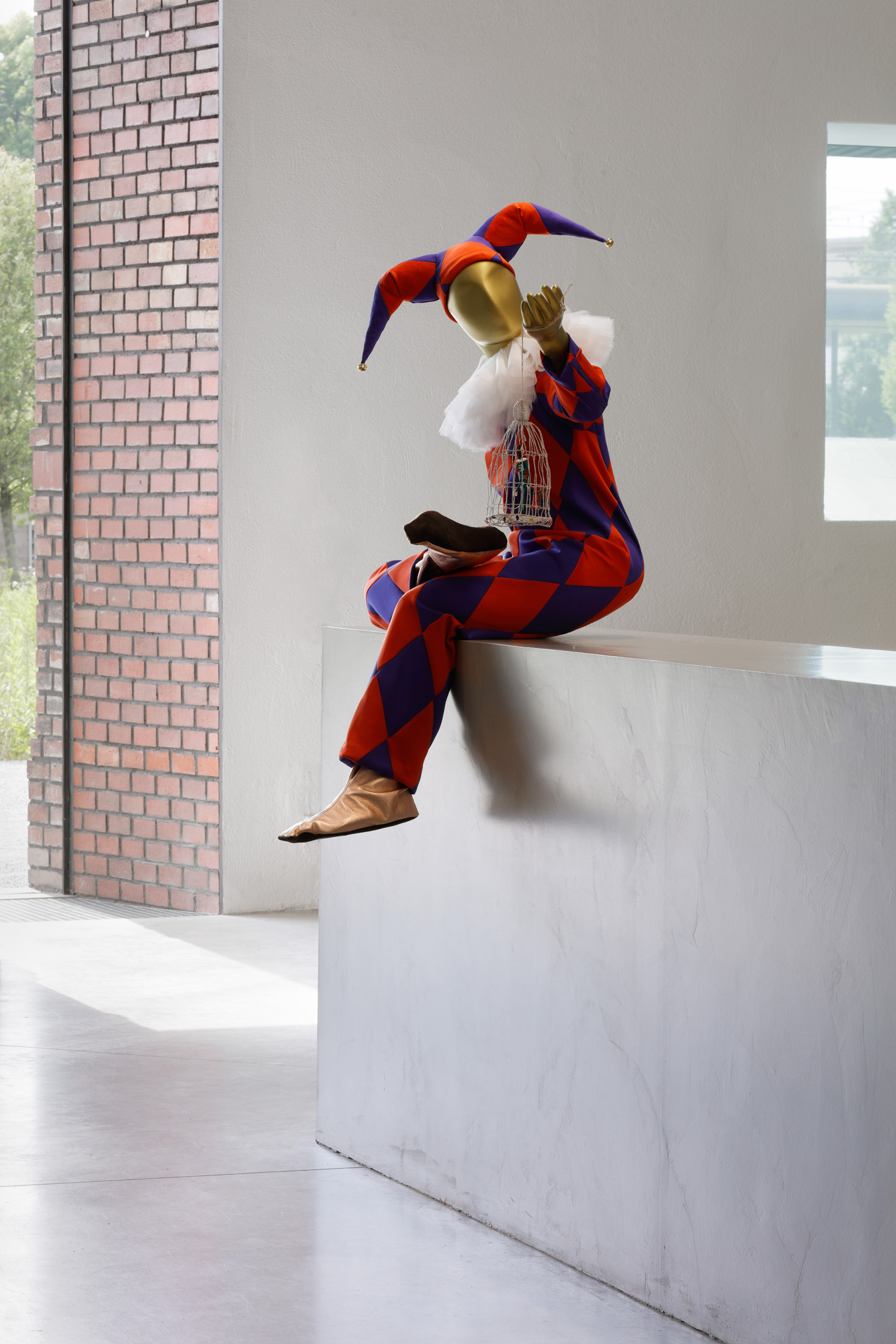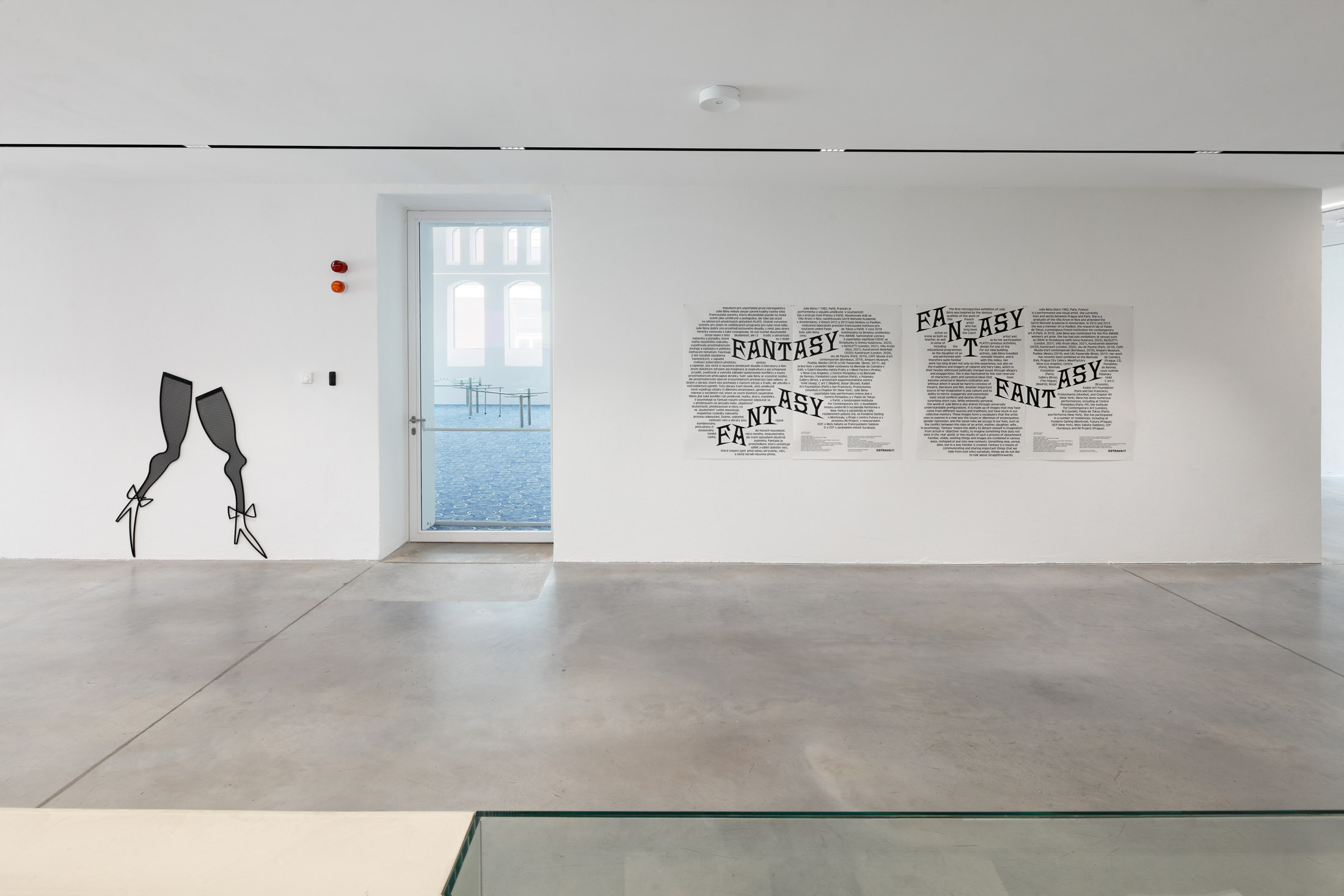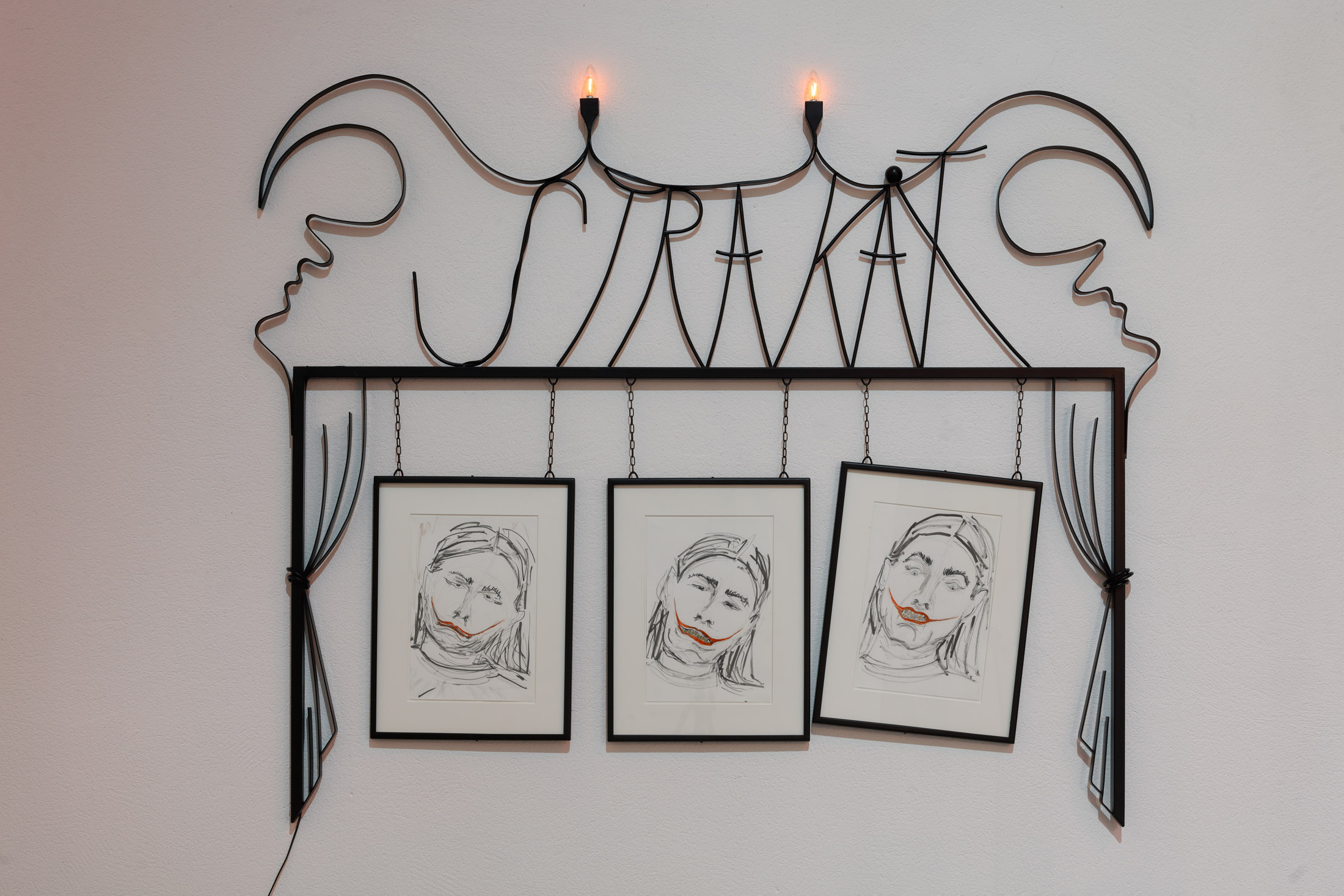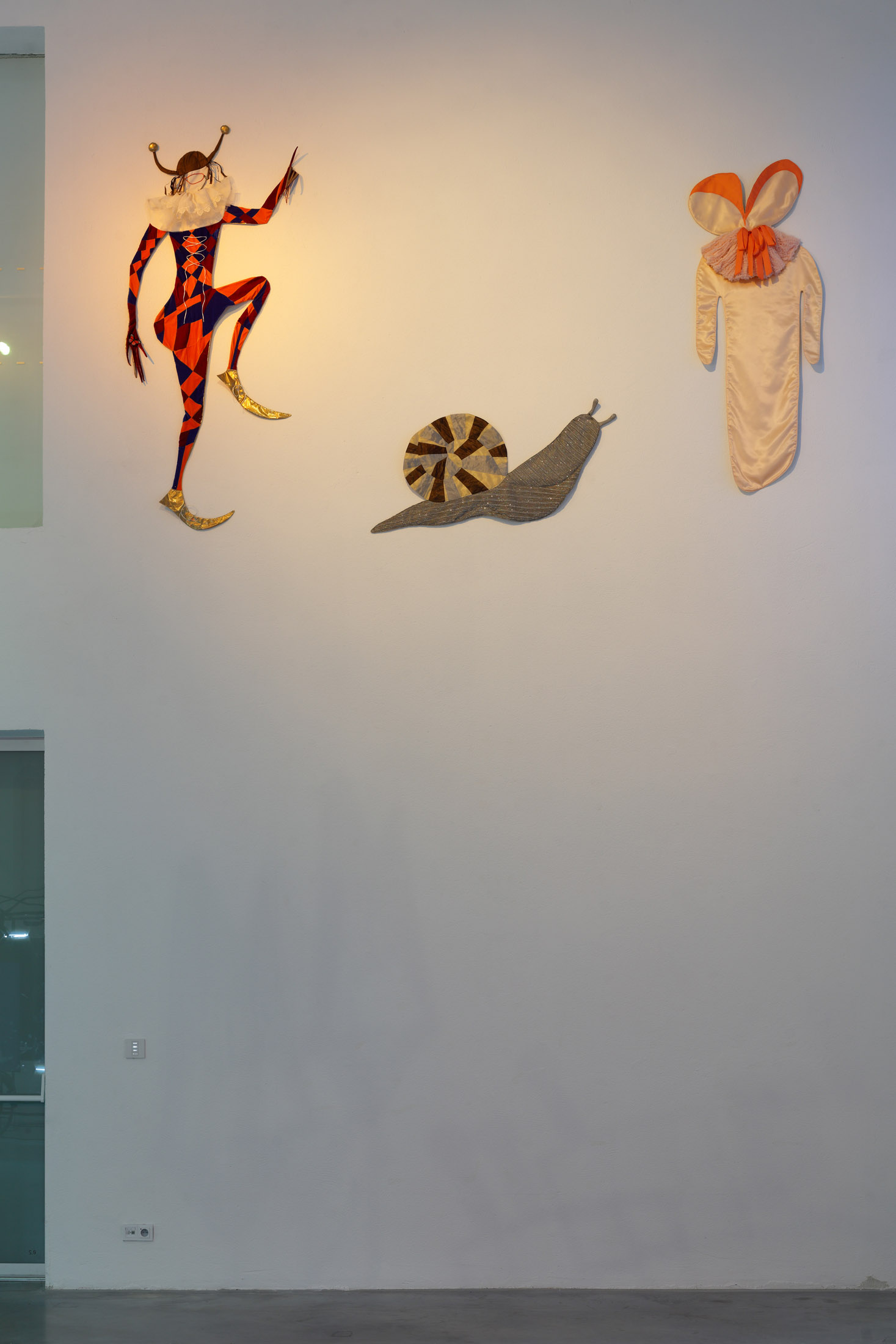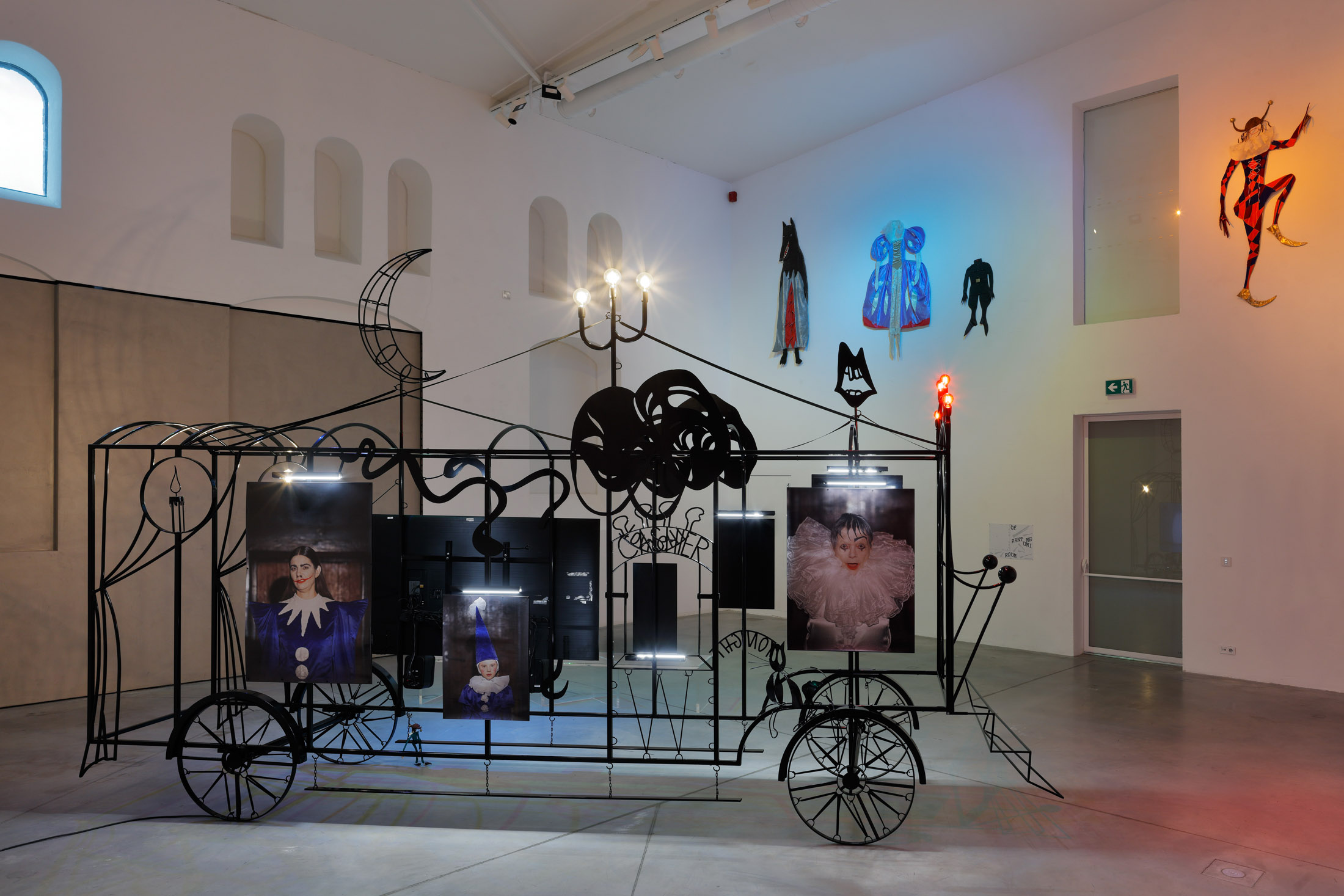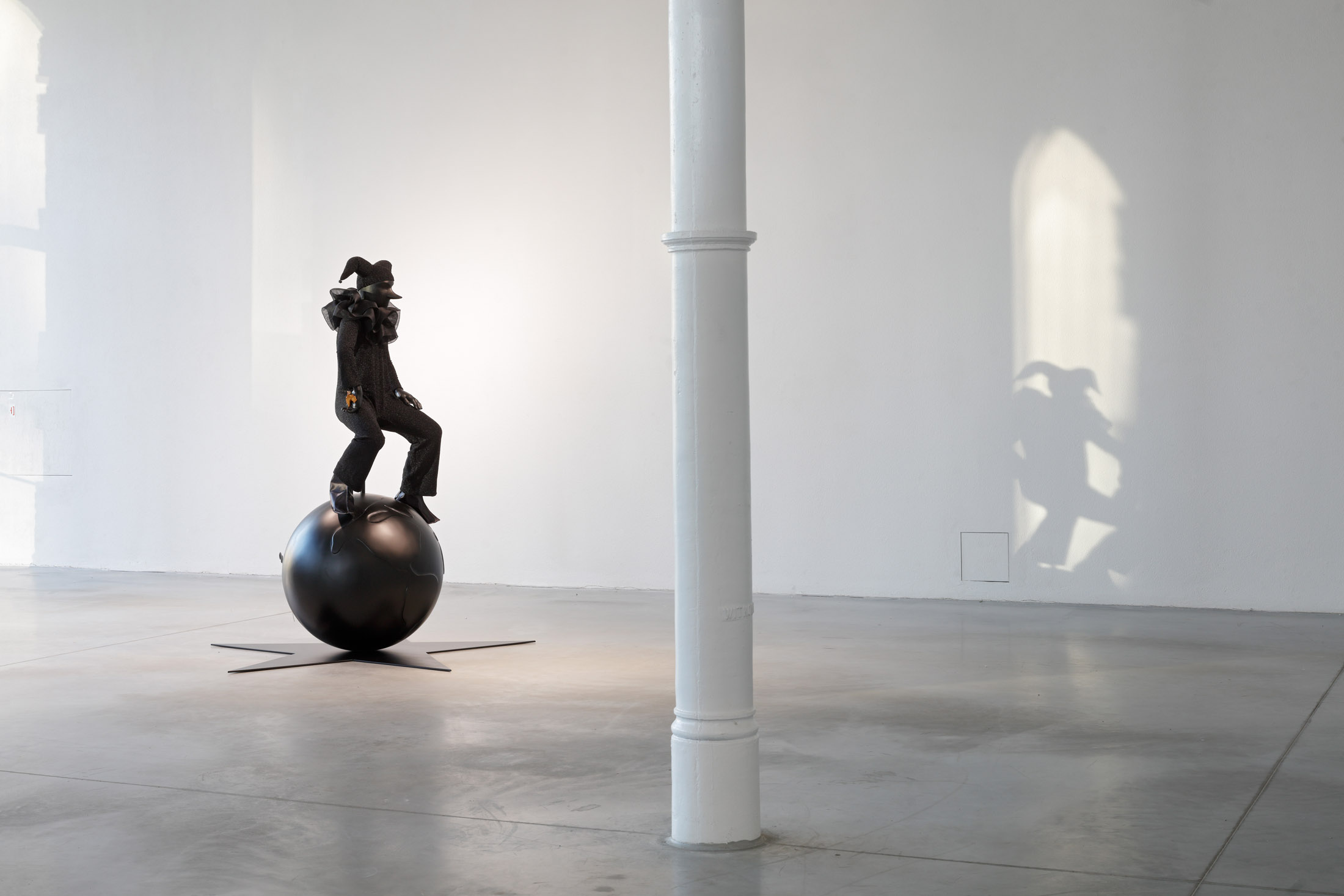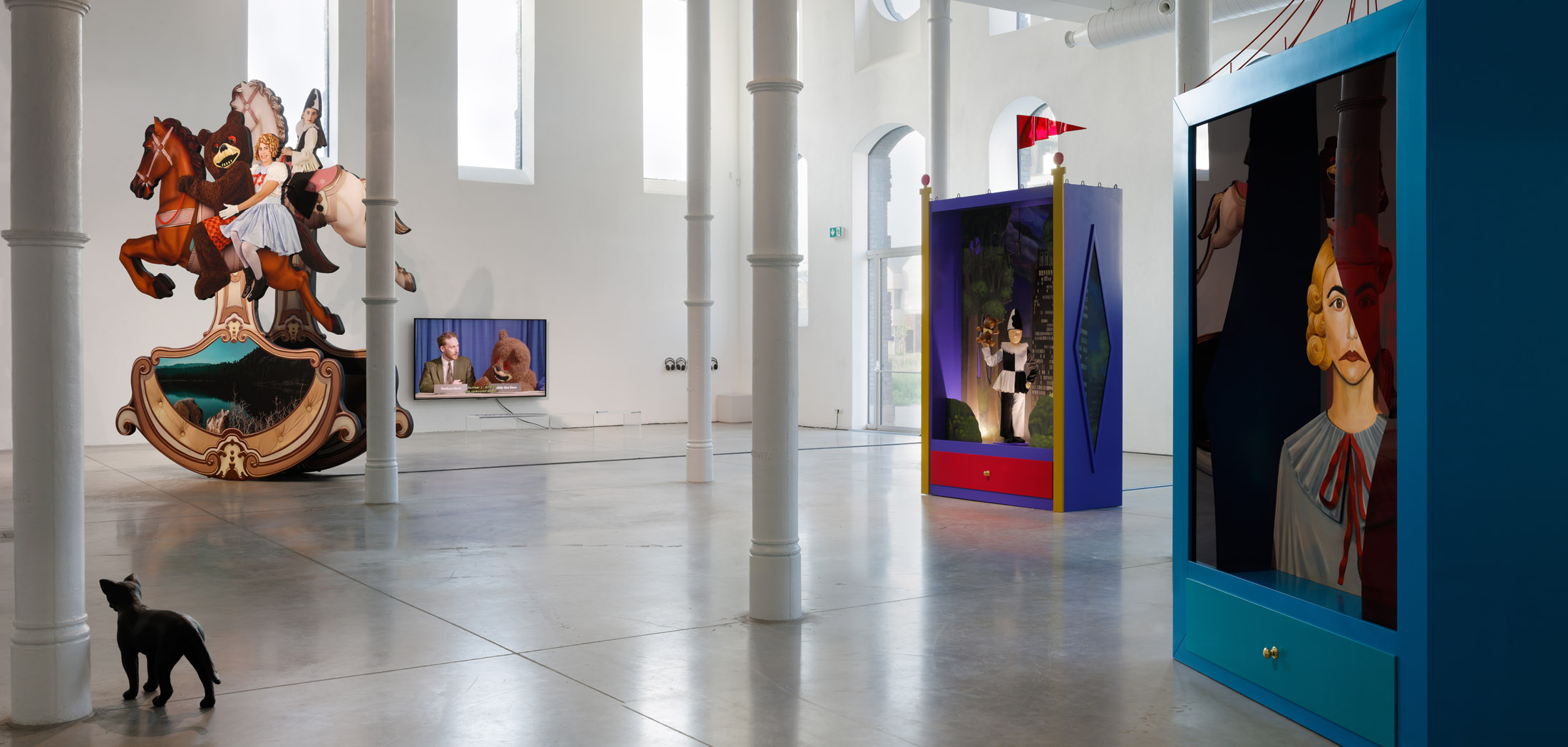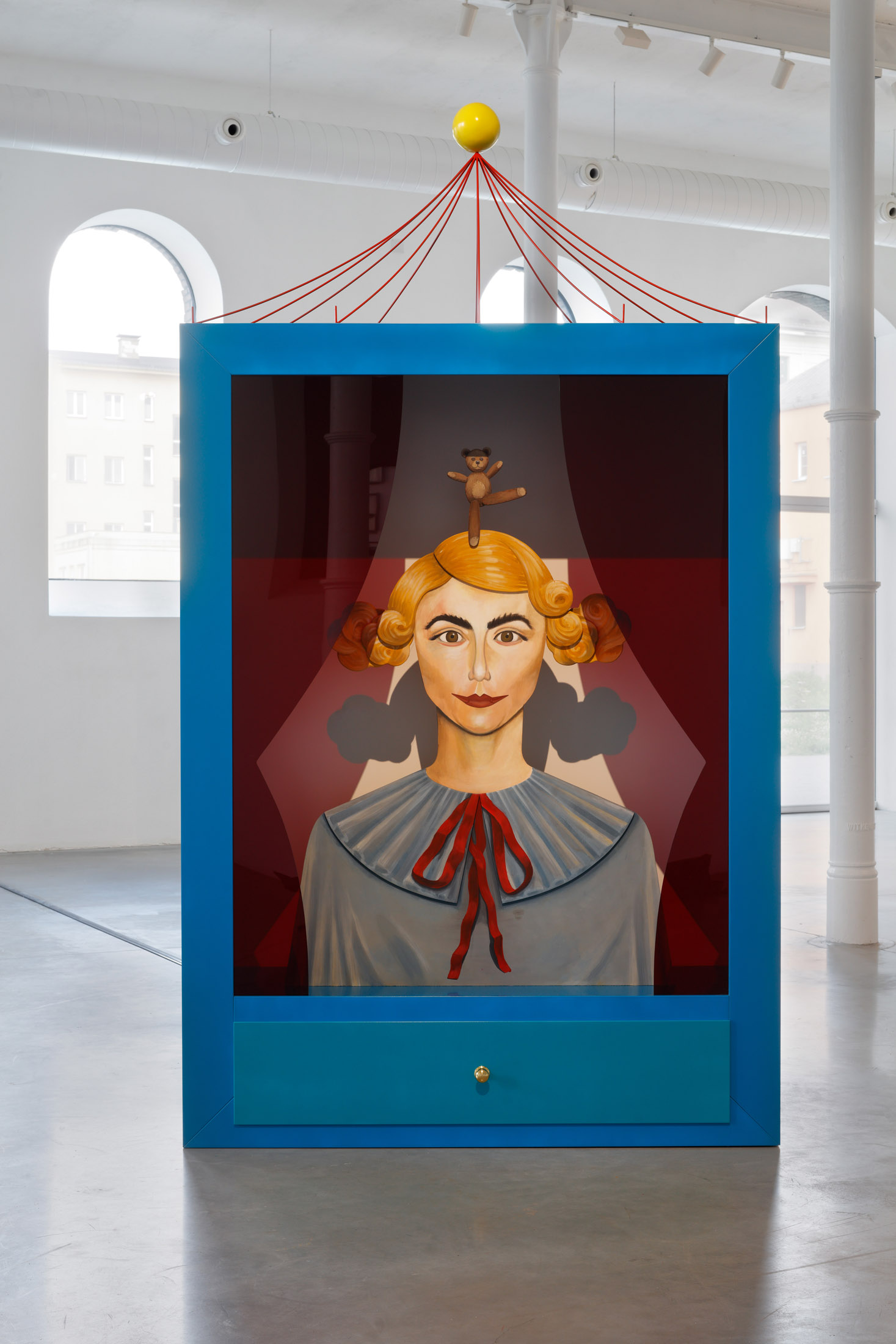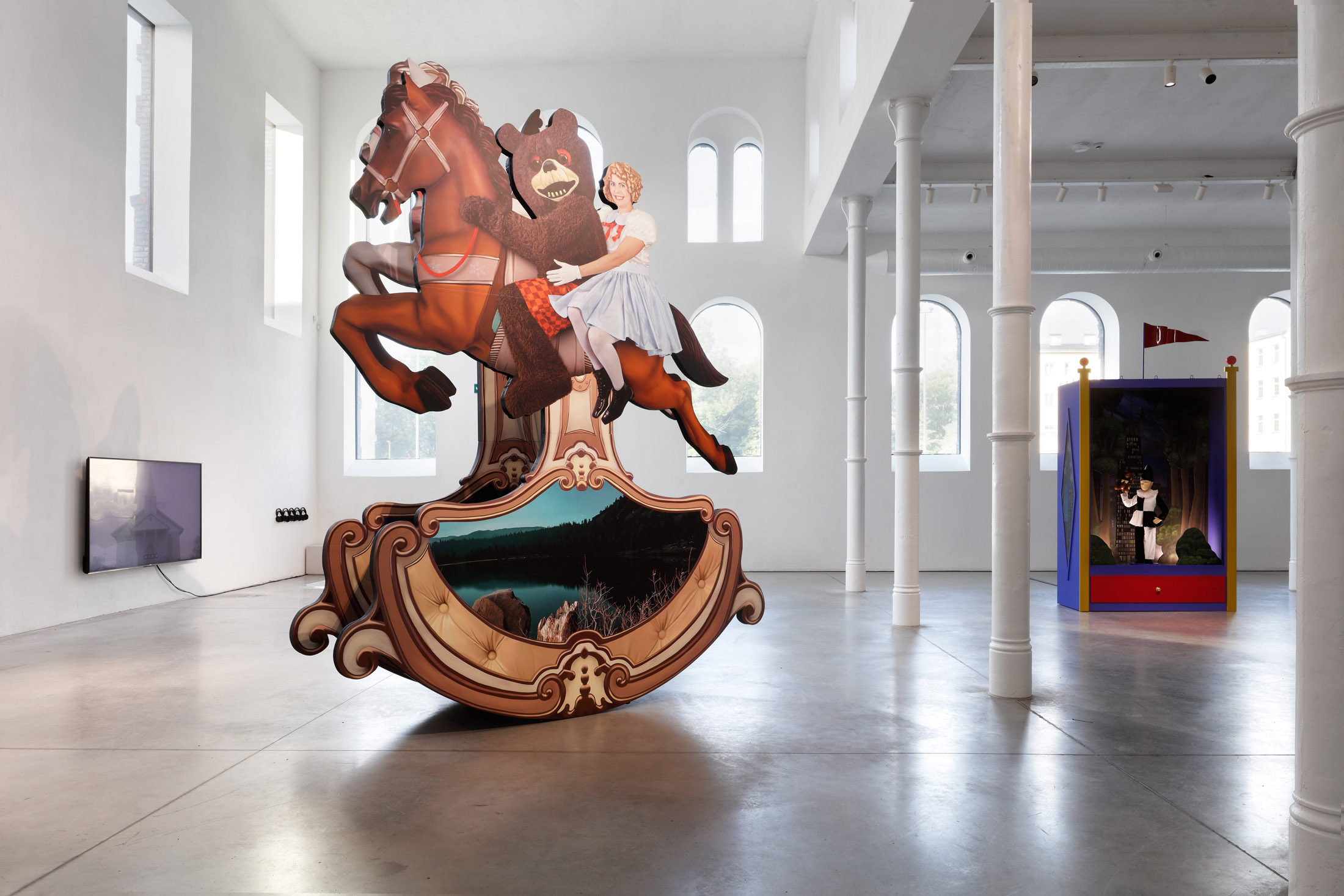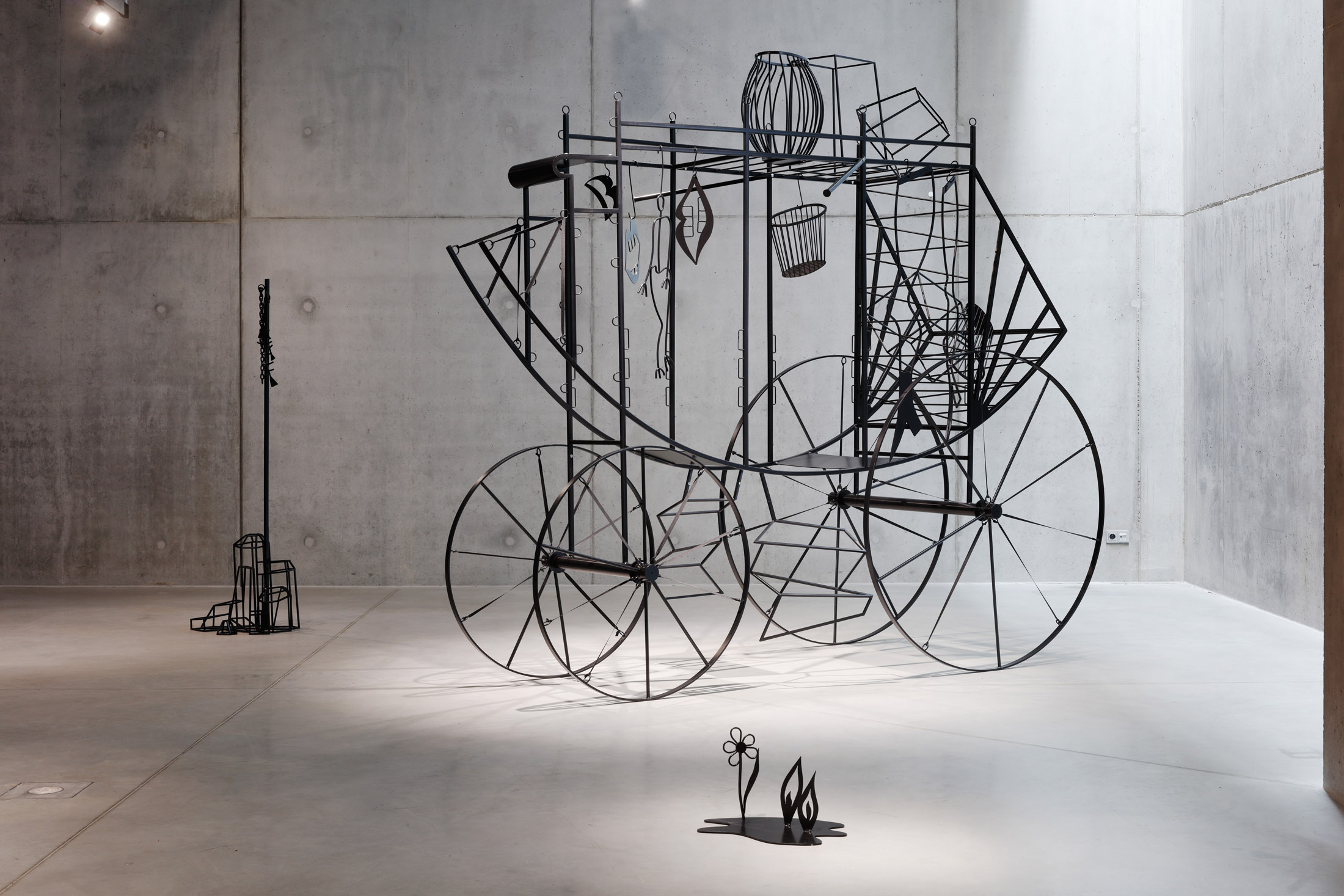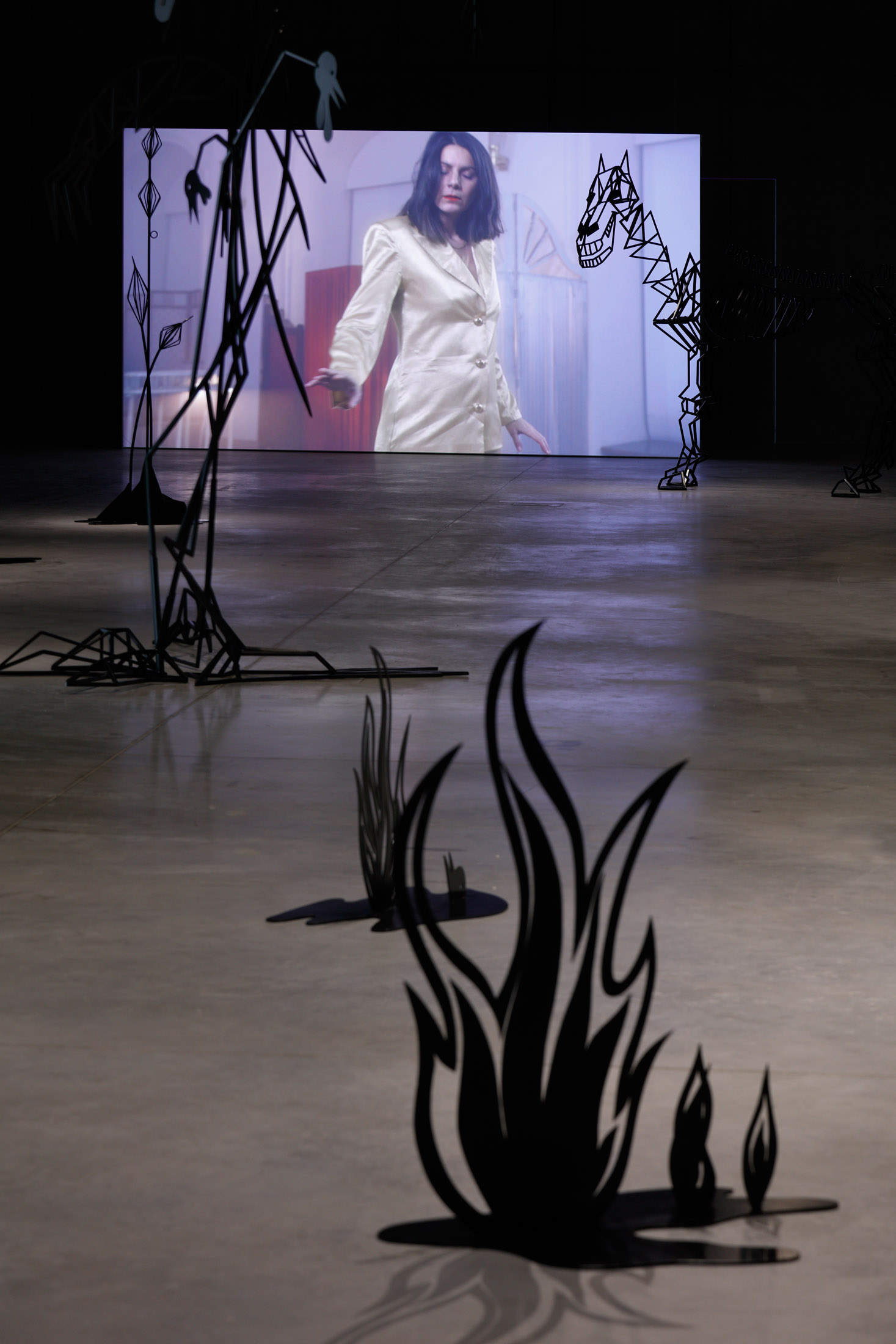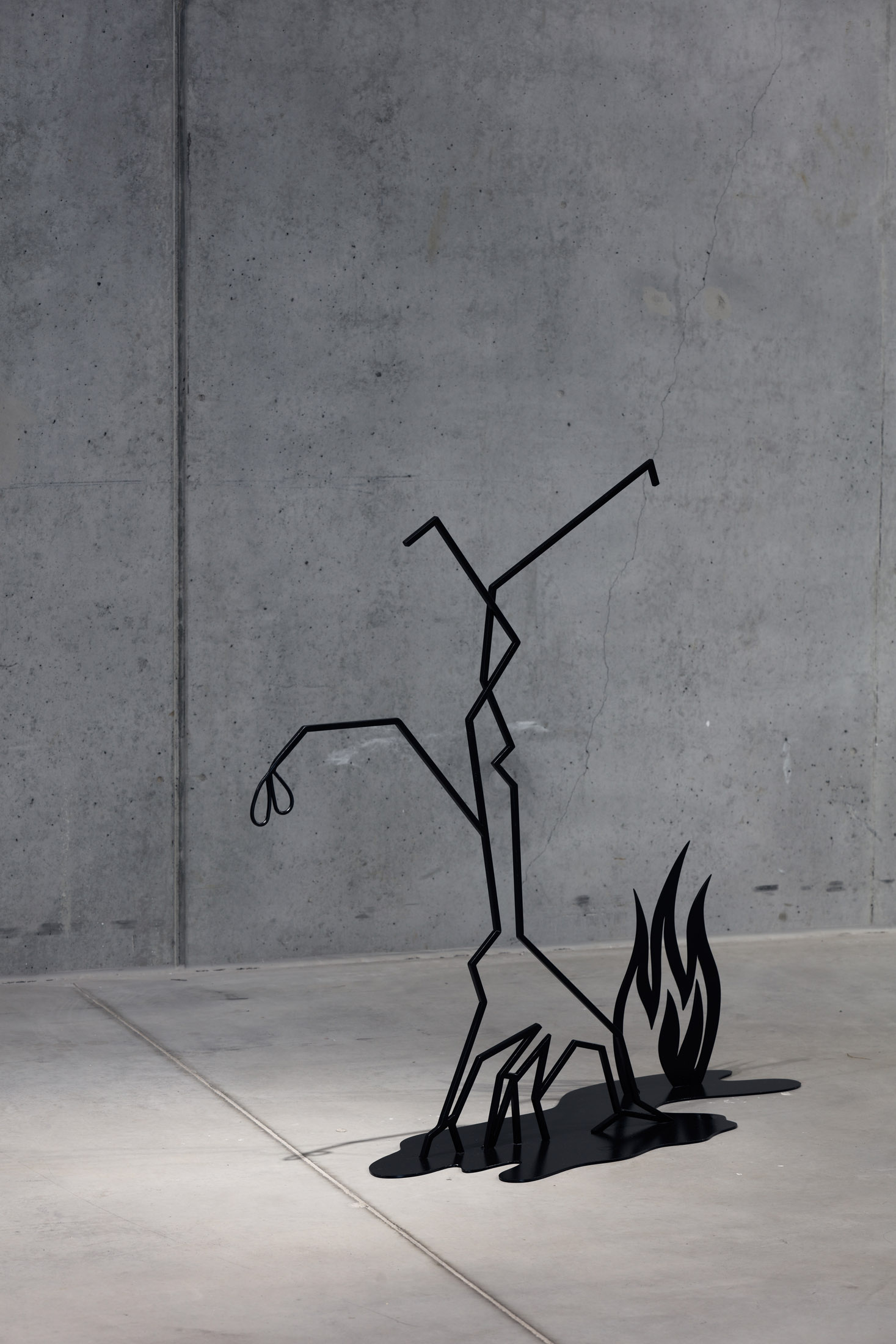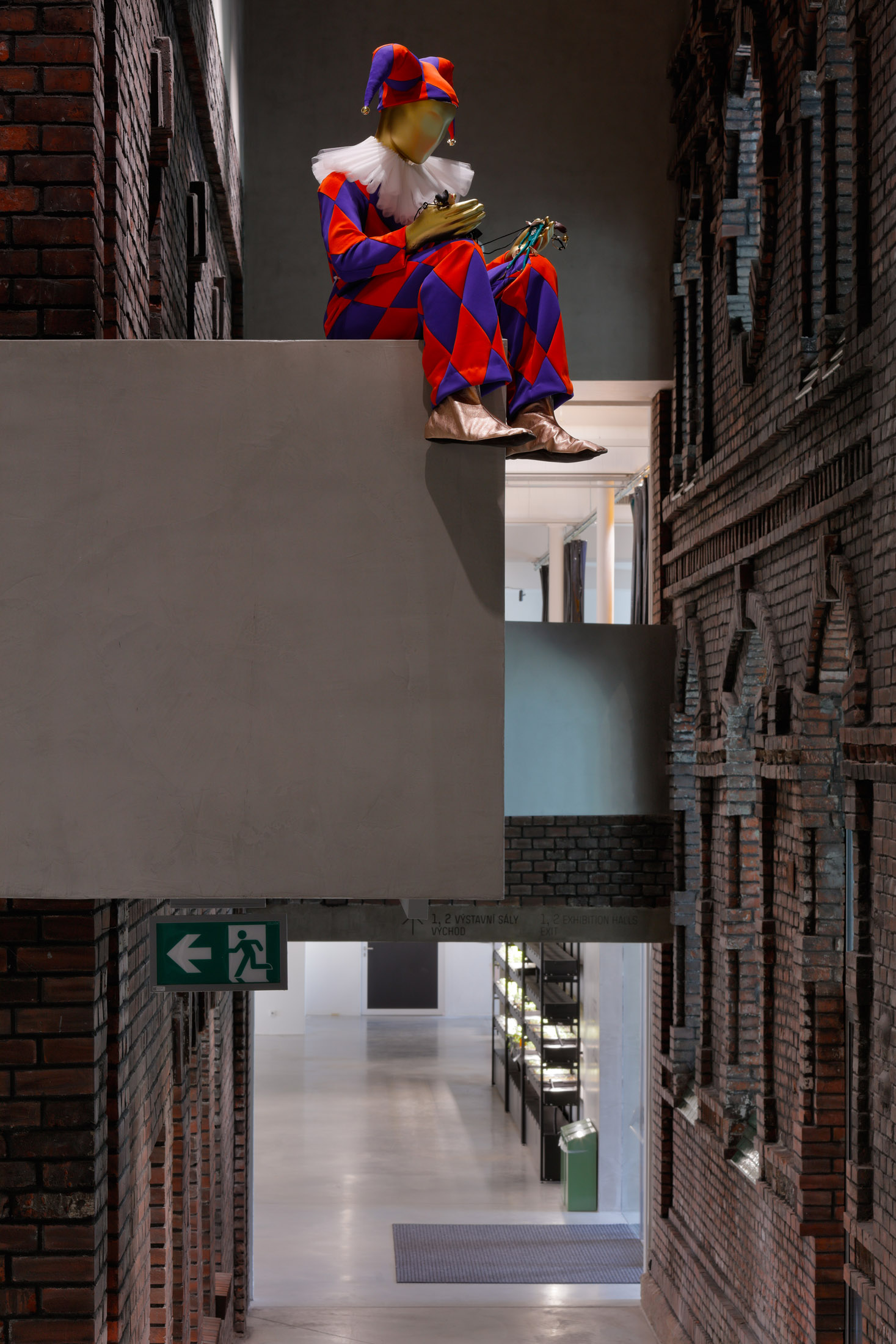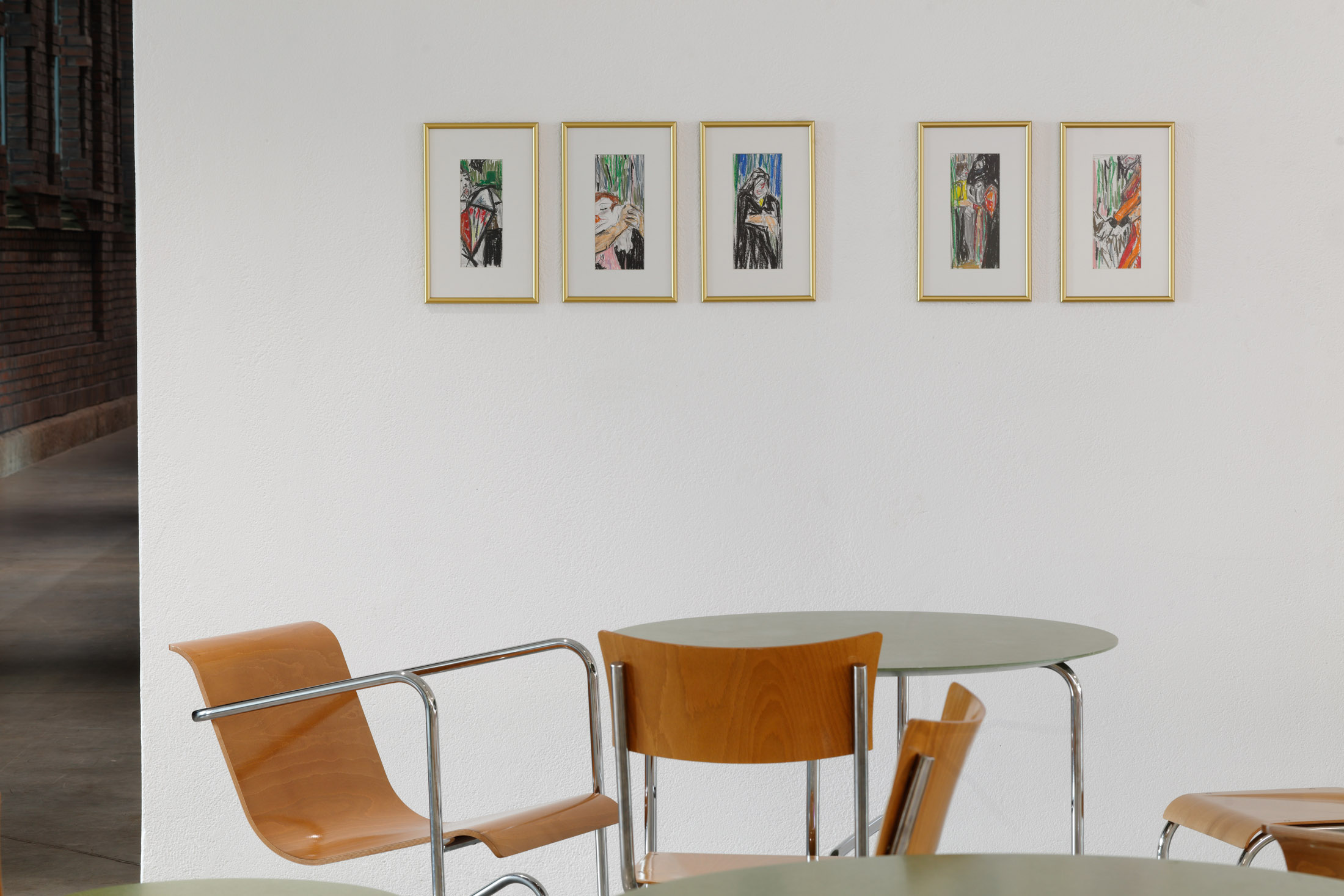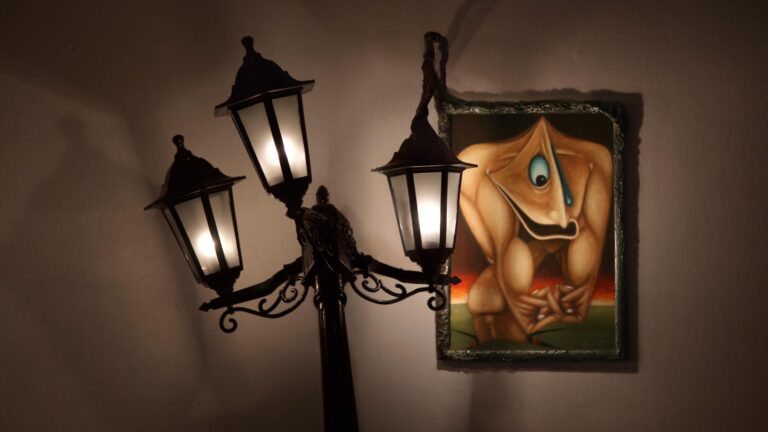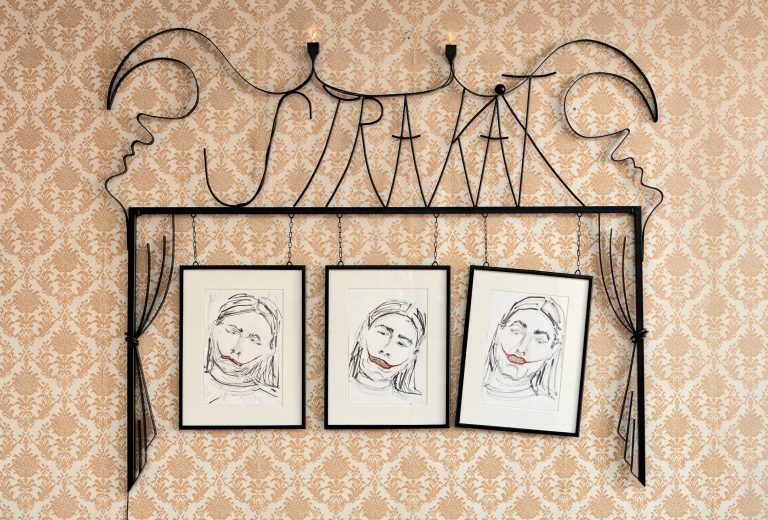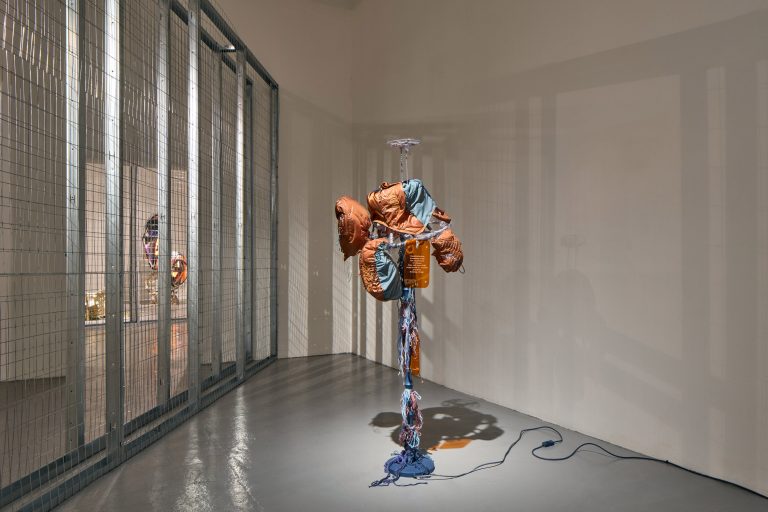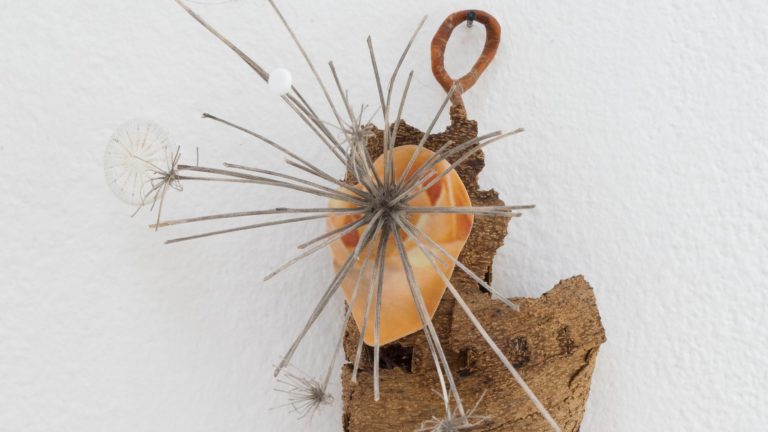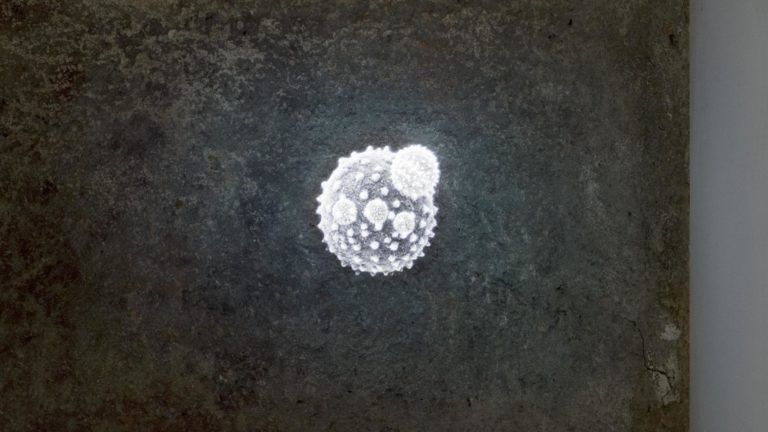Artist: Julie Béna
Exhibition title: Fantasy
Curated by: Marek Pokorný
Venue: PLATO Ostrava, Ostrava, The Czech Republic
Date: May 22 – September 1, 2024
Photography: ©Martin Polák / all images copyright and courtesy of the artist and PLATO Ostrava
Julie Béna’s stories and fantasies fill the PLATO Gallery in Ostrava
Cabaret, circus, fable, fairy tale… These genres are the starting point for the aesthetics of French artist Julie Béna. Born in 1982, Béna lives and works in Prague and Paris; her first retrospective, Fantasy, is now opening at PLATO, the Ostrava City Gallery of Contemporary Art. All the basic motifs, approaches, issues, and media that the artist works with, as well as a view into the fantasy worlds and stories inhabited by characters she creates, are presented in the exhibition. The opening will take place on Wednesday, 22 May at 6 pm, and the exhibition is open through 1 September 2024.
Julie Béna’s sensibility is based on arts on the borderline of high and low culture: she works with the visual aspects of commedia dell’arte, pantomime, cabaret, and circus, where characters are depicted in clear strokes. In her work, Béna builds parallel worlds with highly stylised characters. Her objects and characters have stylised aesthetics, make-up, costumes, and gestures. Using such characters enables the author to work with hyperbole, to exaggerate the situation, to intentionally amplify it, and thus show it in a different light… and to use all this to approach important issues.
“In her work, the artist focuses primarily on reflecting on the status of women in their various roles, discourses, and emancipation efforts. Julie Béna’s art is very mature. The issues she works with are subject to constant processing; she has experienced them, thoroughly reflected on them, and succeeded in finding a befitting language and in attracting attention. Despite being very literary and narrative, they sound genuine. Béna’s works are very professional, very confident; they are not childish,” says Marek Pokorný, director of PLATO and curator of the exhibition.
The exhibition offers a glimpse into each one of the author’s parallel worlds and switches between various dynamics and ambiences. In each of the four exhibition rooms, visitors find a different imaginary world, a different character that guides them through it, amid different topics. “In our society, reality plays the main role, everything is a ‘true story’, and everything must be authentic. Theatre doesn’t aim at depicting reality, and its strength lies in being openly staged. We have too much of reality; we need fantasy and theatre, we need to look at reality with different eyes, including those of children,” adds Julie Béna.
In the first room, it’s the joker, an animated alter ego or avatar of the author, who plays the role of a guide in several of her films. Béna also works with the joker in textile reliefs and metal jewellery. His closest kin would probably be a Jolly Joker, a costumed clown or a character from Tarot cards. As Béna describes her intention, “Many parts are autobiographic. It’s probably also because I live in the Czech Republic, in a different culture that keeps holding up a mirror to me. But my films are not about me, they are about acting and about the roles we all play. And I am interested in the audience – of course – because I am a performer. I want to touch people. I want to show them the way and have them embark on the journey.” She adds how important it is to her to also make the exhibition accessible to children. “In my works, there are many fairy-tale characters, such as a princess or a wolf. You can tell your children fairy tales based on the works you see,” she adds.
The motif of the third and largest room are large statues reminiscent of music boxes, and also a film in which the author plays “Dirty Shirley” – the former child movie star and later US ambassador to Czechoslovakia, Shirley Temple. The new film was made for the PLATO exhibition in collaboration with Denver-based Black Cube Gallery, where Béna was granted a scholarship. “Shirley Temple was a child actress, just like me. I am cast as her but as a middle-aged woman; my seven-year-old daughter also acts in the movie and so does my husband, who is cast as my double. I play with switching roles and reflect on who is, in fact, the doll, the toy, and of whom; what is reality and what is a movie,” said Béna after the shooting.
The final space feels like a desert, or like exhaustion. This is where the film Letters from Prague, Béna’s work about motherhood and burnout, is screened. Also on display in this room are huge metal statues: a horse, a burnt tree. They are evocative of, among other things, fantasies about the Wild West.
The artist is also well-acquainted with touring theatre as she travelled with one as a child actress. In her work, she has long drawn from this experience and from the traditions and imagery of cabaret and fairy tale, which – in their heyday – used allegory and hyperbole to voice opinions about politically thorny issues and the repressive character of social or political reality. This aesthetics and the environment of the theatre enable Béna to speak about serious issues. “I don’t try to say in words what I think about things. I try to say it indirectly. Perhaps this sounds banal, but this is actually the strength of art, the tradition of art, which evolved in our culture. By making us uncertain, it incites us to stop taking something for granted,” says Béna.
She adds that she follows in footsteps of Marcel Marceau by working with silence. “Many of my characters are mute; they make sounds and grimaces, but they don’t speak. This enables me to stress the elements of non-verbal theatre. A mime used to be a strong symbol, but suddenly there is no place for him in society. We need to talk all the time. Clowns and mimes have disappeared,” says Béna.
In the view of the artist, a retrospective is like a book. Everything is in it at the same time, you can re-read the stories, you can skip some and come back to them later, you can glance through it or read through it. You can also go back to it whenever you need.
Julie Béna: Fantasy
23/5–1/9/2024
PLATO, Porážková 26, Ostrava, Czech Rep.
Curator: Marek Pokorný
The first retrospective exhibition of Julie Béna was inspired by the obvious qualities of the work of this French artist who has long been active on the Czech scene as both an artist and teacher, as well as by her participation in some of PLATO’s previous activities, including the design for one of the educational programmes for our new exhibition building.
As the daughter of an actress, Julie Béna travelled and performed with nomadic theatre, and is therefore quite familiar with this milieu. Her work has long drawn not only on this experience, but also on the traditions and imagery of cabaret and fairy tales, which in their heyday addressed politically charged issues through allegory and exaggeration. She is also fascinated by the vast reservoir of characters, plots and canonical ideas that have become universal in Western civilisation and without which it would be hard to conceive of theatre, literature and film. Another important source of her imagination is pop culture and its ability to mirror, exaggerate and exacerbate basic social conflicts and desires through surprising short cuts. While eminently personal, the world of Julie Béna is also shared through universally understandable prefigurations. It is made up of images that may have come from different sources and traditions, but have stuck in our collective memory. These images form a vocabulary that the artist uses to express in a new way the issues or dilemmas of emancipation, gender repression, and the social roles we occupy in our lives, such as the conflict between the roles of an artist, mother, daughter, wife…
In psychology, ‘fantasy’ means the ability to detach oneself in imagination from actual or ‘objective’ reality, to imagine something that does not exist in the ‘real’ world, or the results of such a process of detachment. Familiar, visible, existing things and images are combined in various ways, reshaped or put into new contexts. Something new, unreal, alien, but in a way familiar is created. Fantasy is a means of communicating and sharing important things that we hide from (not only) ourselves, things we do not like to talk about straightforwardly.
Julie Béna (born 1982, Paris, France) is a performance and visual artist. She currently lives and works between Prague and Paris. She is a graduate of the internship at Villa Arson in Nice and attended the Gerrit Rietveld Academie in Amsterdam. In 2012 and 2013 she was a member of Le Pavillon, the research lab of Palais de Tokyo, a prestigious French contemporary art gallery in Paris. In 2018, Julie Béna was nominated for the Prix AWARE women’s art prize. She has had solo exhibitions at venues such as CEEAC in Strasbourg (with Anna Hulačová, 2023), NıCOLETTı (London, 2021), Villa Arson (Nice, 2021), Kunstverein Bielefeld (2020); Kunstraum (London, 2020); Jeu de Paume (Paris, 2019); CAPC Musée d’art contemporain (Bordeaux, 2019); Amparo Museum, Puebla, Mexico (2019); and CAC Passerelle (Brest, 2017). Her work has recently been exhibited at the Biennale de Coimbra, Italy, Prague City Gallery, MeetFactory (Prague, CZ), Neve (Los Angeles), Centre Pompidou (Paris), Biennale de Rennes, Fondation Louis Vuitton (Paris), Polansky Gallery (Brno), 1646 (The Hague), C art C (Madrid), Bozar (Brussels), Kadist Art Foundation (Paris and San Francisco), Protocinema (Istanbul), and Chapter NY (New York). Béna has done numerous performances, including at Centre Pompidou (Paris, FR), the Institute for Contemporary Art (London), M (Louvain), Palais de Tokyo (Paris) and Performa (New York). She has participated in a number of residencies, including at Fonderie Darling (Montreal), Futura (Prague), ISCP (New York), Moly Sabata (Sablons), CCF (Surabaya) and INI Project (Prague).

